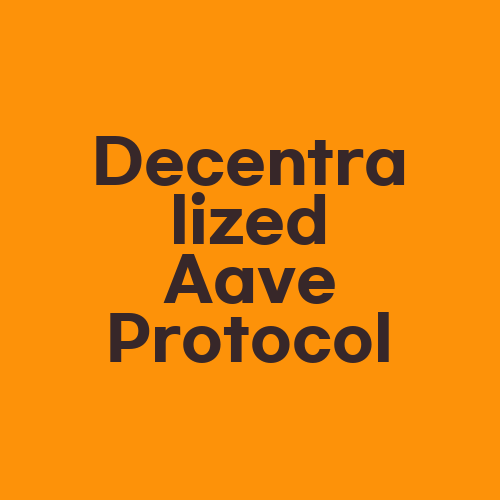Decentralized Aave Protocol

Decentralized Aave Protocol: The Ultimate Financial Solution for Borrowers and Lenders
Aave, founded in 2017, is an open-source and non-custodial lending platform where borrowers and lenders can interact on a decentralized platform. Aave is built on the Ethereum network and provides a user-friendly interface for lending and borrowing Ethereum and other ERC-20 tokens. What makes Aave unique is its ability to offer liquidation-free loans, which means no physical collateral is required, and users are not penalized for non-repayment of loans. This article takes a closer look at Aave, explains how it works, its benefits, and how to use it.
How Does Aave Work?
Aave enables users to lend and borrow cryptocurrencies, including Ethereum and other ERC-20 tokens. The protocol has a unique lending pool that allows borrowers to deposit cryptocurrencies into the Aave pool as collateral, which can be used to borrow other tokens or stablecoins. The Aave platform offers variable and stable interest rates on loans, which are determined by market conditions and user demand. Interest rates are determined by algorithms that ensure liquidity and stability on the platform.
One of the unique features of Aave is its “flash loans” feature. Flash loans enable users to borrow funds without any collateral, provided the loan is repaid within the same Ethereum transaction. Flash loans allow traders to take advantage of arbitrage opportunities across different decentralized exchanges (DEX), making Aave popular among traders and arbitrage enthusiasts. Flash loans have been instrumental in creating a DeFi ecosystem that is more efficient and market-oriented.
What are Some of the Benefits of Aave?
Decentralized Platform: Aave is a decentralized platform that is built on the Ethereum network and interacts with other decentralized applications (dApps). Aave users can interact with other dApps without the need for intermediaries, banks, or any other third-party service provider.
Flexible Loan Terms: Aave offers flexible loan terms that are determined by market conditions. Users can lend and borrow different cryptocurrencies and earn interest on their deposits.
Low-Cost Transactions: Aave transactions are completed on the Ethereum network, which means that transaction fees are relatively low. Users can enjoy low-cost transactions while still interacting with a decentralized platform.
Liquidation-Free Loans: Aave offers liquidation-free loans, which means that users are not required to provide collateral to obtain a loan. This feature makes Aave popular among cryptocurrency traders and investors.
How to Use Aave?
To use Aave, users must first connect their Ethereum wallets to the platform. Aave supports a wide range of Ethereum wallets, including MetaMask, Ledger, Trezor, and WalletConnect, among others. Once the wallet is connected, users can choose to lend or borrow cryptocurrencies. To lend, users must deposit cryptocurrencies into the Aave pool, and to borrow, users must provide collateral. Aave offers variable and stable interest rates, which are determined by market conditions and user demand.
The Aave user interface is easy to use and navigate, making it accessible to users, regardless of their technical abilities. Aave also offers a comprehensive FAQ page that provides answers to common questions about the platform.
Conclusion
Aave is a decentralized, non-custodial lending platform that provides borrowers and lenders with a flexible and efficient way to interact and transact on a decentralized platform. Aave has gained popularity among traders and investors due to its liquidation-free loan feature and flexible loan terms. Aave is an excellent alternative to traditional lending platforms, as it eliminates the need for intermediaries and offers low transaction fees.
Therefore, if you are looking for a decentralized platform that offers flexible loan terms, low transaction fees, and liquidation-free loans, Aave is the perfect solution for you.
Useful Sources:
- https://aave.com/how-it-works (Aave official website)
- https://github.com/aave/aave-protocol (Aave official Github page)
- https://medium.com/aave (Aave official Medium page)
- https://docs.aave.com/ (Aave official documentation)